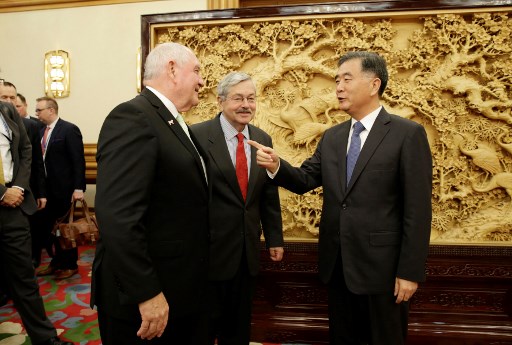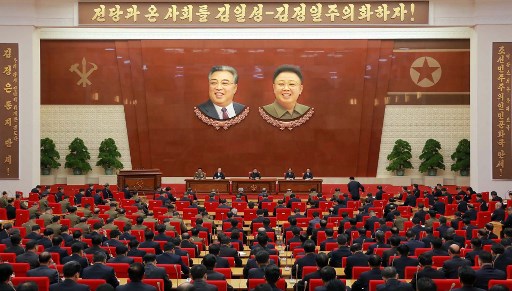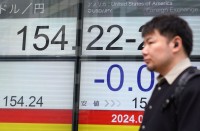
China opened its gates to US beef imports last week, giving US cattle farmers much sought-after access to the country’s massive market following a 14-year ban. / AFP PHOTO / POOL / JASON LEE
BEIJING, China (AFP) — China’s imports from North Korea fell for the seventh month in a row, official data showed Friday, after Beijing vowed to apply UN sanctions to pressure Pyongyang over its nuclear and missile tests.
Speaking at a press conference, Customs administration spokesman Huang Songping said China’s imports from North Korea had dropped by almost 38 percent in September year-on-year, while exports were down 6.7 percent.
China, North Korea’s main trade partner, has gone along with a package of sanctions, including bans on imports of coal, iron and seafood from North Korea as well as limits on exports of refined petroleum products to the reclusive nation.

With the wider world, China’s trade is booming — exports and imports surged in September, official data showed.
Customs figures showed exports grew 8.1 percent and imports expanded 18.7 percent in September, compared with the same period last year. The surge in imports shows demand in China is strong.
It was a better performance than August, when exports rose 5.5 percent and imports were up 13.3 percent.
China’s September trade surplus reached $28.5 billion, compared to customs revised figure for August of $41 billion.
However, while China’s imports reading beat forecasts in a Bloomberg News survey, exports fell slightly short.
“Today’s figures suggest that not only has strong foreign demand continued to prop up manufacturing activity in China but domestic demand remains resilient too,” Julian Evans-Pritchard, China Economist at Capital Economics wrote in a note.
But Evans-Pritchard said the figures were skewed because there were more working days last month compared with last year’s period, as the nearly week-long Mid-Autumn Festival holiday was held in September 2016.
China’s falling imports from the North may provide some salve to the Trump administration, as China’s trade surplus with the US ballooned further last month.
The surplus with the United States reached $28.1 billion in September, up from $24.9 billion in September of last year.
The trade data was the latest positive economic news for China after the International Monetary Fund released a report this week raising the country’s growth forecasts for 2017 and 2018 to 6.8 percent and 6.5 percent, respectively.
It is good news for President Xi who is expected to secure a second five-year term as general secretary of the Communist Party during its twice-a-decade congress, which opens on Wednesday.
© Agence France-Presse







